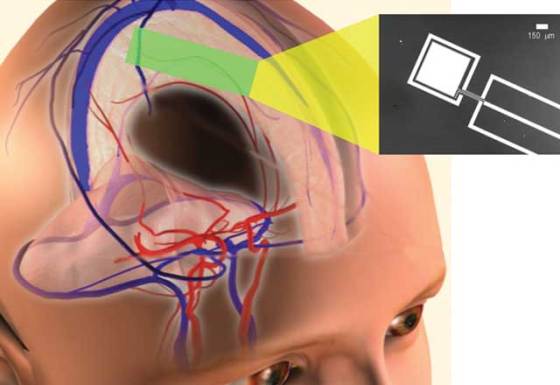MIT develops implantable fuel cell powered by glucose
![]() MIT engineers have developed a fuel cell that runs on the same sugar that powers human cells – glucose. Although the technology has been around since 1970s, MIT fuel cell is fabricated from silicon, using the same technology used to make semiconductor electronic chips. This feature allows it to be integrated with other circuits that would be needed for brain implant of the future.
MIT engineers have developed a fuel cell that runs on the same sugar that powers human cells – glucose. Although the technology has been around since 1970s, MIT fuel cell is fabricated from silicon, using the same technology used to make semiconductor electronic chips. This feature allows it to be integrated with other circuits that would be needed for brain implant of the future.
Led by Rahul Sarpeshkar, an associate professor of electrical engineering and computer science at MIT, the researchers created the fuel cell without biological components. It consists of a platinum catalyst which was chosen due to a proven record of long-term biocompatibility within the body. It strips electrons from glucose, mimicking the activity of cellular enzymes that break down glucose to generate ATP. These stripped electrons create a small electric current which can be used to up to hundreds of microwatts of power.
“It will be a few more years into the future before you see people with spinal-cord injuries receive such implantable systems in the context of standard medical care, but those are the sorts of devices you could envision powering from a glucose-based fuel cell”, said Benjamin Rapoport, a former graduate student in the Sarpeshkar lab and the first author on the new MIT study.
The fabrication of the glucose fuel cell was done in collaboration with Jakub Kedzierski at MIT’s Lincoln Laboratory. The fuel cell features a classic half-open, two-chamber design which is sized and shaped to fit a particular anatomic compartment, and constructed using semiconductor fabrication techniques that could in principle permit manufacture together with integrated circuits on a single silicon wafer.
The researchers expect that their findings could enable completely ‘self-powered’ implants which would rely on glucose in their surroundings. Rapoport calculated that in theory, the glucose fuel cell could get all the sugar it needs from the cerebrospinal fluid (CSF) which serves as protection for the cortex which providing a basic mechanical and immunological protection of the brain inside the skull.
Since glucose represents one of the major substances found in the CSF, and the implant requires only a small fraction of it to get power through the glucose fuel cell, the impact on the brain’s function would likely be small. CSF also contains very few cells, so it is highly unlikely that an implant located there would provoke an immune response.
Sarpeshkar’s group is a leader in the field of ultra-low-power electronics, having pioneered such designs for cochlear implants and brain implants. They have worked on all aspects of implantable brain-machine interfaces and neural prosthetics, including recording from nerves, stimulating nerves, decoding nerve signals and communicating wirelessly with implants.
For more information, you can read the article published in PLoS ONE: “A Glucose Fuel Cell for Implantable Brain–Machine Interfaces”.










Leave your response!